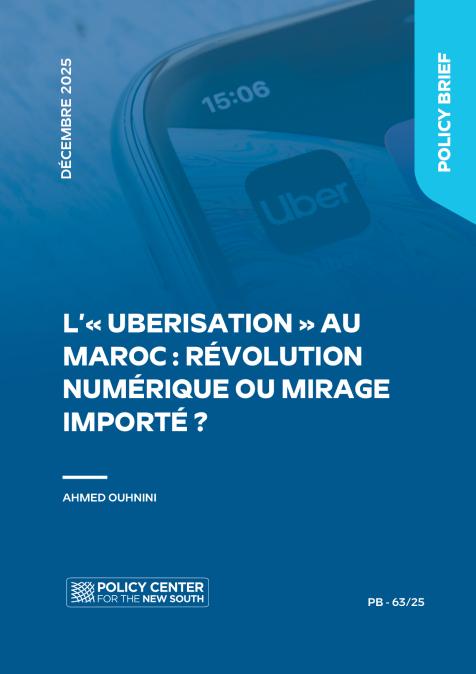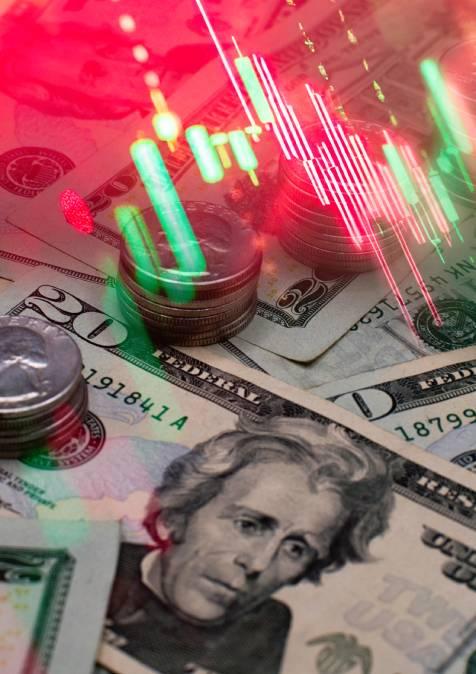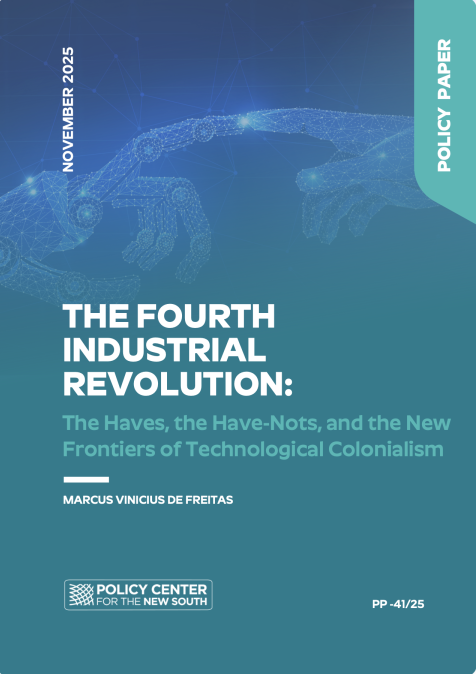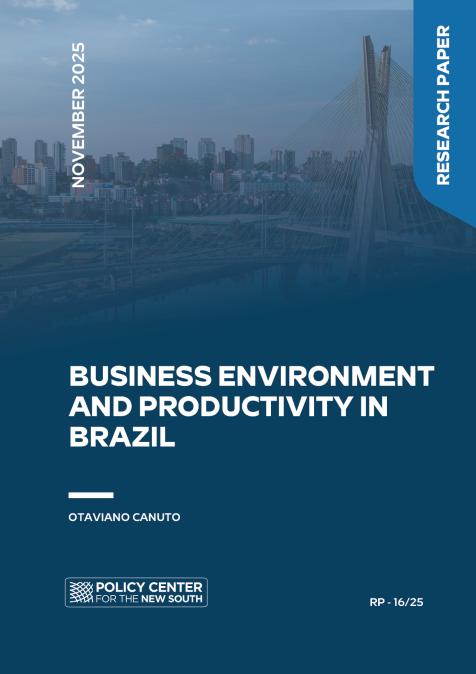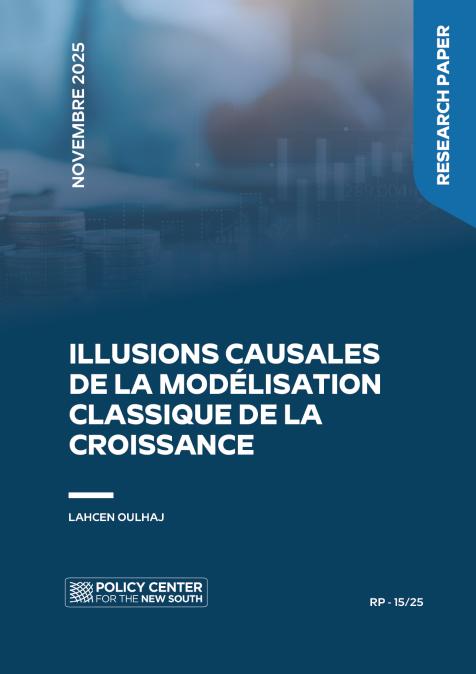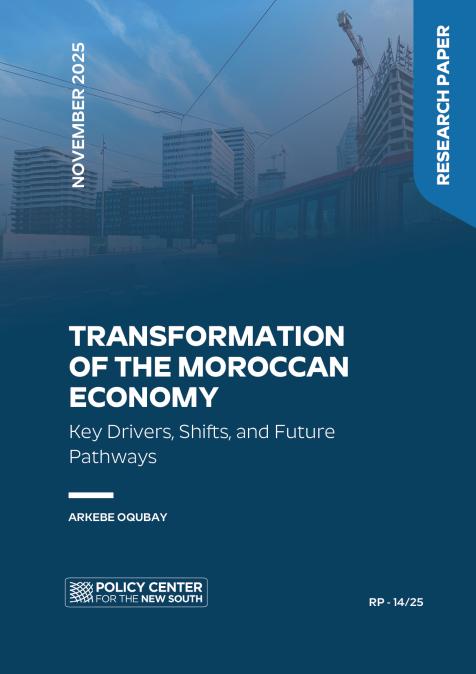Publications /
Policy Brief
Amidst intense geopolitical competition, efforts to develop tokenized monetary units—tradable on programmable platforms such as blockchains—have added a new dimension to the debate about the role of a global payment and reserve currency. Tokenized monetary units are expected to greatly improve the efficiency of payment transactions in terms of their speed and cost, especially cross-border transactions. They could also meet emerging demand for technologically enabled features such as smart contracts, which can be embedded in monetary tokens. The country that can promote and develop tokenization based on its fiat money—the United States, for example—would enjoy first-mover advantages, being able to attract users to its tokenized platforms, and helping to strengthen the role of its currency in global payments and finance in the digital age. Alternatively, if several major countries could compete by developing tokenized money, the shift to a multi-currency reserve system would be accelerated.
Introduction
The multilateral, rule-based trading system has crumbled because of unilateral use of tariffs, which in several cases have been settled through bilateral negotiations. This has raised questions about the sustainability of the international monetary system (IMS) based on the U.S. dollar. Even before the end of the Second World War, the Bretton Woods agreement set up a fixed exchange rate system based on the dollar, which in turn was convertible to gold at a fixed price of $35 per ounce; while other currencies had fixed, but adjustable, exchange rates to the dollar. By 1971, the growing budget deficit needed to fund the war in Vietnam led United States President Richard Nixon to abandon the dollar’s peg and convertibility to gold. After a brief period of uncertainty, the world settled into a flexible exchange rate system, but with the dollar still dominant in global payment and finance.
Fast forward half a century. The unilateral use of tariffs, large budget deficits, and growing public debt in the US have again led to questions about the soundness of the dollar and its role in the IMS. Furthermore, geopolitical considerations have prompted other major countries and jurisdictions to find ways to reduce their reliance on the U.S. dollar and financial system for their cross-border transactions and sovereign reserve assets. Understandably, these de-dollarization initiatives have triggered efforts by the U.S. to push back in defending the dollar’s premier position, emphasizing the advantage it offers of being backed by the world’s largest economy, and most sophisticated and liquid financial market.
Against this backdrop, efforts to develop tokenized monetary units—directly tradable on programmable platforms such as blockchains—have added a new aspect to the debate about the attributes necessary for a global payment and reserve currency. Specifically, tokenized monetary units are expected to greatly improve the efficiency of payment transactions, including in terms of time to settle and cost, especially cross-border transactions. They also promise to meet emerging demand for technologically enabled features, such as smart contracts, which can be embedded in monetary tokens. The country or jurisdiction that can promote and develop tokenization based on its fiat money would enjoy first-mover advantages, being able to attract users to its tokenized platforms, helping to strengthen the role of its currency in global payments and finance in the digital age.
The tokenization race has begun in earnest as President Donald Trump has promoted stablecoins and crypto assets more generally in his second term. Concretely, the U.S. has taken a major step forward, as the President signed into law the GENIUS Act on July 18, 2025. This has provided regulatory clarity for privately-issued, dollar-based stablecoins in competing against traditional payment instruments and other monetary tokens, including tokenized money market funds and bank deposits. All these have the potential to become parts of the finance mainstream.
In response, China has adjusted its strong preference for its Central Bank Digital Currency (CBDC), the called e-CNY, and is considering allowing yuan-based stablecoins in order to promote an international role for the RMB. By contrast, European popular and political opinion appears to remain skeptical about both privately issued stablecoins—either dollar- or euro-backed—and digital euros, which have been favored by the European Central Bank (ECB). This skepticism may change as stablecoins develop.
Though in competition, these digital products, each with advantages and disadvantages, could complement each other. Eventually, CBDCs could join the mix, likely to be offered in other major jurisdictions such as the European Union and China (but not the U.S., where opposition to a digital dollar is strong, mainly because of privacy concerns).
These tokenized instruments offer users a range of choices in the fast-developing digital payment space, expected to significantly improve the efficiency of global payment transactions while introducing new risks. It is still too early to say if tokenized money will take off, and which products will be embraced by the public. If monetary tokens become parts of the mainstream, they would bring new features, including improvements and risks to the IMS. In the process, the IMS will be reshaped, and with it, the role of the global transaction and reserve currency—essentially going though another stage in the long evolution of money in history.
What is Tokenization?
Tokenization basically means recording claims on real world assets, either physical (such as ownership of a painting), or financial (such as bonds or fiat currencies in the case of stablecoins), as digital units (i.e. tokens), which can be exchanged via programmable platforms such as blockchains based on distributed ledger technology. However, tokens can exist on technological platforms different from blockchains. For example, Paypal offers both network tokens on traditional computer systems as well as the stablecoin PYUSD on a blockchain.
Unlike crypto assets such as Bitcoin, which are based on public or permission-less blockchains where the supply of new Bitcoins and the verification of transactions depends on anonymous participants (i.e. miners), tokenized monetary instruments such as stablecoins are based on permissioned blockchains, where the issuers of stablecoins are regulated and verification of transactions is entrusted to a few pre-approved entities—for example issuers of stablecoins. Monetary tokens can be non-fungible (i.e. each digital claim on a painting is unique), or fungible (claims such as stablecoins can be interchangeable, therefore useful as means of payment).
Theoretically, a country can tokenize its central bank money (the reserves of member banks held at the central bank and cash), commercial bank deposits, claims on financial assets such as stocks and bonds or investment funds; all can be put on a unified ledger. This framework will enable a very efficient process of buying/selling of assets, making payments and settling transactions, and transferring ownership—all happening almost instantaneously online—instead of going through the currently cumbersome process of messaging, paying, clearing and settlement, and transferring ownership claims with custodian organizations. Indeed, the Bank for International Settlements (BIS) has proposed the tokenization of bank deposits on a unified ledger, preferring that to stablecoins, which in its view carry many financial stability and monetary sovereignty risks.
Central Bank Digital Currency (CBDC)
Ironically, it was the launch of the first stablecoin in 2019—the Libra, later renamed the Diem, and abandoned in 2022 —which alerted the world’s central banks (CBs) to the potential challenge of emerging digital payment instruments. To preserve their central roles in payment systems, CBs have initiated projects to study and test use cases of CBDCs as tokenized versions of their fiat currencies. At present, 137 CBs and monetary unions are exploring a CBDC for wholesale (settlements among banks) or retail (settling transactions between businesses and consumers) uses, with 49 CBDC pilot projects around the world. Three countries—Bahamas, Jamaica, and Nigeria—have fully launched CBDCs. Generally speaking, the CBDC pilot projects have shown that digital fiat currencies are feasible from a technological point of view. CBDCs can be issued using distributed-ledger or centralized-ledger technology, and can be used on and offline.
However, CBDCs appear to encounter popular reluctance, at various levels of intensity in different countries, arising because of social and political considerations. Concerns center around two main issues. First, the confidentiality of CBDC transactions and privacy of their users are vulnerable to the risks of monitoring and control exercised by the central bank/government. Second, there is the risk that commercial banks might be destabilized because they might lose their deposits to CBDCs during periods of market turmoil—essentially a digital bank run. Different countries have approached these issues differently, eventually leading to divergent regulatory frameworks for CBDCs and crypto assets in general.
China’s digital yuan (e-CNY) is the largest CBDC pilot in the world, with cumulative transaction volumes having reached 7 trillion renminbi ($986 billion) in mid-2025 in 29 provincial regions. China has made much progress in articulating its CBDC strategy. The People’s Bank of China (PBoC) is advanced in plans to issue a retail digital yuan (called the e-CNY) as digital versions of cash yuan (but not replacing cash)—both being components of the monetary aggregate M1– indirectly through commercial banks and other authorized vendors for retail transactions, not wholesale clearance among banks. Consequently, businesses and consumers will not have accounts at the PBoC but will obtain e-CNYs, probably in e-wallets, from banks and other vendors, which will perform the required know-your-customers, anti-money laundering, and anti-terrorist financing checks. It is not clear if the PBoC would use centralized ledger technology or distributed ledger technology. In either case, it would retain the capacity to control the digital yuan and its e-wallets through approved close-source coding.
China addresses the privacy concern with a ‘managed anonymity’ concept: users will be provided with regulatory safeguards against potential abuse of personal information by businesses, but the government will be able to monitor and control payment transactions for public security and compliance with tax and financial regulations. The government can also use CBDCs to implement its policies, including targeted lending or sending stimulus funds to designated segments of the population. The risk of a digital bank run (from bank deposits) will be mitigated by limits placed on the daily download and use of e-CNYs—a feature easy to implement thanks to the programmability of CBDCs.
After the initial enthusiasm, progress on the pilot projects has been slow recently. Chinese retail customers appear to be content with existing mobile payment platforms offered by Alipay and WeChat Pay, which together have more than a billion users, accounting for 94% of China’s mobile payment transactions. It seems likely that China will eventually launch the e-CNY as an additional mobile payment platform, complementary to, and interchangeable with, the two currently popular ones, to safeguard the continuity of payments in case of disruption of the private services.
China has also engaged in the m-Bridge project, cooperating with the monetary authorities of Hong Kong, Thailand, the UAE, and Saudi Arabia (joined in 2024). The BIS withdrew from the project in 2024, declaring that the project had progressed sufficiently. The aim of m-Bridge is to test a multi-CBDC platform to enable efficient real-time settlements of cross-border payment and foreign-exchange transactions among participating countries. The project reached the Minimum Viable Product (MVP) stage in 2024 .
India’s e-rupee is the second largest CBDC pilot project, with circulation worth $26 million in Fiscal Year 2023-24 . Similar to China, progress in the CBDC pilot project in India has seemed to slow given the popularity of the UPI (Unified Payment Interface) real-time payment system, which enables users to transfer funds between their bank accounts on mobile devices.
For countries that have officially launched their CBDCs—Bahamas, Jamaica, and Nigeria—the IMF has found that adoption has been slow and limited for a range of reasons, including public awareness and trust, preference for existing payment methods, and insufficient incentives for intermediaries.
In Europe, the ECB has been working on the digital euro to defend its monetary sovereignty against possible market penetration by dollar-based stablecoins, which the ECB thinks would also pose risks to financial stability. However, public opinion and many politicians remain skeptical, unconvinced of the need for CBDCs. The primary concerns are about protecting privacy and avoiding erosion of the bank deposit base—especially through digital bank runs—which could destabilize banks and weaken their capacity to extend credit to the economy. The political reluctance may be in the process of change in the face of progress made by dollar-based stablecoins. EU member states reportedly appear to look favorably at the ECB’s proposal to give them the final say over the limits of digital euros consumption can hold in the e-wallets at any point in time—addressing their concerns about potential risks to the stability of the banking system.
It is interesting to note that the Bank of England has paid a lot of attention to exploring the wholesale Central Bank Digital Currency (wCBDC) as “a new platform for the distribution of wholesale central bank money”.
In the U.S., concerns about privacy and the government’s ability to monitor citizens’ financial transactions have led to opposition to CBDCs. The Fed cannot issue a digital dollar without authorization by Congress, and, in addition, the Anti-CBDC Surveillance State Act (HR 1919) was passed on July 17, 2025 by the House of Representatives to prohibit the Fed from issuing digital dollars directly or indirectly to the public. This piece of legislation is being considered in the Senate.
Thus so far, in the EU, UK, and China—let alone the U.S.—no necessary legislation has been passed to authorize the official issuance and use of CBDCs.
Stablecoins
Stablecoins are now subject to U.S. regulation under the GENIUS Act, which requires private issuers of stablecoins to maintain liquid reserves that matching one to one with the amount of stablecoins issued, and to comply with existing know-your-client, anti-money laundering, and anti-terrorist financing requirements. This puts stablecoins on a level regulatory field with tokenized money market funds and bank deposits. Indeed, after the GENIUS Act became law, dollar-based stablecoin transaction volumes surged to $1.5 trillion in July 2025, with a market capitalization of about $300 billion, accounting for more than 99% of the whole stablecoin market.
The advantages of stablecoins include improved exchangeability and settlement, and programmability on blockchains, enhancing the utility of stablecoins as a modern means of payment. In addition, stablecoin issuers would be a source of demand for short-term government securities to satisfy reserve requirements—useful for countries that need funding for their fiscal deficits. For example, —major issuers of dollar-based stablecoins—are backed by U.S. Treasury bills (directly at $130 billion or 2% of the total U.S. Treasuries market), and repos ($45 or 0.4% of the total repo market). These U.S. Treasury holdings are small, compared to those of money market mutual funds (at $3.1 trillion), but will likely grow in importance as stablecoins develop.
Their disadvantages, besides the usual cybersecurity risks and those highlighted by the BIS mentioned above, include the risk of de-pegging, i.e. when the market value of the reserves falls below the one-to-one peg, especially during times of market stresses. Several stablecoins have already been de-pegged on various occasions. In particular, the TerraUSDC was de-pegged in 2022 as its issuing company collapsed. A year later, the USDC was temporarily de-pegged in March 2023 when its issuer, Circle, revealed that about 8% of its reserves were held at Silicon Valley Bank, which collapsed. Forced sales of U.S. Treasury holdings to meet redemption demand if users lose confidence in issuers of stablecoins could trigger selling pressure in the U.S. Treasury market to the detriment of many market participants. This risk could become significant as the outstanding volume of stablecoins grows in future. Market turmoil caused by incidents such as those mentioned above would require the Fed to supply liquidity to stabilize financial markets.
In addition to bank and liquidity risks, concerns about include business-model sustainability, network transactions fees, fragmentation and interoperability of stablecoin wallets, bank and exchange intermediation, and fraud risks. In particular, users of dollar-based stablecoins outside the U.S. or the jurisdictions of the issuing companies could be vulnerable to disruption caused by de-pegging, or failures of the issuers without a clear path of recourse. Supervisory regimes in jurisdictions where issuing companies are headquartered and in areas where stablecoins are used widely need to be sufficiently robust to deal with these problems.
It is important to note that, in most cases, holders of stablecoins do not receive interest income generated by the assets held in reserves; this income accrues to the issuers, such as Tether or Circle. In the case of Paypal, holders of its PYUSDs are paid interest on their daily average account balances. By and large, stablecoins holders can generate income by lending through or providing liquidity to decentralized finance (DeFi) platforms. The GENIUS Act explicitly prohibits the payment of interest to stablecoins holders, bringing clarity to the issue of interest payment. In addition, stablecoins are not eligible for Federal Deposit Insurance Corporation (FDIC) protection. Conceivably, these features could put stablecoins at a competitive disadvantage compared to tokenized bank deposits.
Generally speaking, the progress made by dollar-based stablecoins with strong government support has prompted other major countries and jurisdictions to adjust their policy stances on stablecoins, with a view to safeguard their domestic payment spaces against penetration by dollar-based stablecoins. China is likely to complement its preference for a CBDC with plans to promote yuan-based stablecoins to compete against dollar-based stablecoins. A likely scenario would be for Beijing to make use of Hong Kong’s recent stablecoins regulations to allow Hong Kong-based companies to issue yuan-based, and even dollar-based, stablecoins to compete internationally against dollar-based stablecoins issued by U.S.-owned or based companies. Meanwhile, Beijing will eventually issue digital yuan, the e-CNY, as the digital version of its legal tender, as a complement to the popular mobile payment platforms Alibaba and WeChat Pay, and as a backstop to ensure the stability and continuity of its domestic payment system.
Even in the European Union, where skepticism about tokenized money is widespread, there have been voices calling for euro-based stablecoins to safeguard the EU domestic payment system against domination but U.S. payment platforms—not only dollar-based stablecoins but also credit cards such as Visa and Mastercard, and payment companies such as PayPal. At the moment, the market capitalization of euro-based stablecoins is tiny, estimated to be $450 million, or only 0.15% of that of dollar-based stablecoins.
Tokenized Bank Deposits
Tokenization can repackage commercial bank liabilities such as deposits as digital units on blockchains, marrying the convenience of near-instant exchangeability, settlement, and programmability, with the protection of banking regulations. Tokenized bank deposits are parts of banks’ deposit-taking activity and are thus fully under the purview of existing banking regulations, enjoying, in the U.S., the protection of the Federal Deposit Insurance Corporation (FDIC). Importantly, banks can pay interest on tokenized deposits if they offer them as time deposits. Banks can also issue stablecoins through their subsidiaries. Consequently, banks are in a good position to compete against non-bank issuers of stablecoins for market shares in the digital payment space.
US banks have been active in this space. For example, J.P. Morgan has announced plans to issue deposit tokens, JPMD, on a public blockchain. For several years, J.P. Morgan has offered a permissioned blockchain-based bank account through Kinexys Digital Payments (formerly JPM Coin and Onyx), which processes about $2 billion in transactions daily. Importantly, JPM has successfully settled a tokenized Exchange Traded Fund (ETF) of U.S. Treasury securities against tokenized bank deposits as part of a public test net—proving the use case for monetary tokens. Meanwhile, Citi’s Regulated Liability Network allows corporate treasurers to manage their cash balances quickly across national borders without going through SWIFT (Society for Worldwide Interbank Telecommunication). Corporate treasurers have thus begun to use tokenized bank deposits and stablecoins to carry out liquidity management globally.
It remains to be seen if tokenized bank deposits will catch on with retail customers.
There have been concerns about the risk that tokenized bank deposits accelerate (digital) bank runs and make them more severe. This raises the question of whether the current banking regulatory framework and the practice of daily withdrawal limits can address this potential risk.
Tokenized Money Market Funds (TMMFs)
Shares in traditional money market funds (holding short-term securities such as Treasury bills and certificates of deposit) can be tokenized to be exchangeable and programmable on blockchains. This offers several benefits, including fractional ownership, improved price transparency, and liquidity, as TMMFs can be traded 24/7 with near instant transfers and settlement. However, TMMFs are exposed to all cybersecurity risks, including disruption and hacking. It has been estimated that TMMFs grew to $2 billion in 2024, and are expected to account for 1% of the MMF assets under management by 2030. The current outstanding amount of MMFs, estimated to exceed $7 trillion by the Investment Companies Institute (ICI), creates significant scope for tokenization as demand seems to begin growing. Blackrock’s TMMF (BUIDL) was the first to reach the size of $2.9 billion in mid-2025, and has been accepted by major crypto exchanges as collateral alongside Bitcoin and stablecoins. More recently, Goldman Sachs and Bank of New York announced plans to introduce MMF tokens, a joint effort of two important players considered to be a significant step in the tokenization of MMFs.
TMMFs are considered to be securities, and thus are regulated by the U.S. Securities and Exchange Commission (SEC). In addition to enjoying the benefits of digital tokens, holders of TMMFs receive interest payments arising from the assets held by the funds. The programmability of TMMFs can help facilitate the implementation of liquidity fees and gates to mitigate the risk of redemption crises, as seen during the Great Financial Crisis of 2008.
Tokenization of Money: Possible Impacts on the International Monetary System
It is still too early to say if monetary tokens will be embraced by the public and will become a mainstream payment platform, and which instruments would be preferred. There is likely to be both competition and complementarity between various monetary tokens, including stablecoins, TMMFs, tokenized bank deposits, and CBDCs. For example, users can switch easily from interest-yielding TMMFs or tokenized deposits, to stablecoins and/or CBDCs to make payments, and vice versa. Ultimately, the needs and preferences of users, both businesses and retail customers, and their perceptions of the respective advantages and disadvantages, will determine the development trajectories of these tokenized monetary instruments.
In summary, the advantages and disadvantages of different tokenized monetary units are as follows:
- CBDCs: issued by the central bank as digital version of fiat money, exchangeable and programmable on centralized or distributed ledgers, open to government monitoring and control;
- Crypto assets such as Bitcoin: anonymous miners and users on permissionless blockchains, wide fluctuations in prices, open to illegal uses;
- Stablecoins: issued by registered and supervised companies, required to maintain reserve assets matching one-to-one with outstanding stablecoins, not earning interest, and vulnerable to risks of de-pegging or failure of issuers;
- Tokenized bank deposits: tokenized version of bank deposits, enjoying FDIC protection, earning interest in the case of tokenized time deposits, and posing risks of digital bank runs;
- Tokenized money market funds: enhanced liquidity being able to trade 24/7, but with risks of quick redemption by investors.
The tokenization of money can bring benefits to the global payment system but also poses risks, in the process reshaping the international monetary system.
Tokenized monetary units, including stablecoins and CBDCs, can significantly improve efficiency and reduce the costs of payment transactions. The more participants there are, the more useful a digital payment platform becomes. This important network effect has increased the first-mover advantages of attracting users to populate early platforms, to the competitive disadvantages of late comers.
In addition, the programmability of monetary tokens and their platforms can facilitate the development of new products and services, such as smart contracts, which can make full use of advances in payment technology to satisfy the needs of business and retail users.
Of particular importance, if dollar-based stablecoins can garner widespread usage by participants in many different countries, the U.S. will gain a first-mover advantage, potentially strengthening the role of the dollar in digital payment transactions, cementing its dominant status in global finance. The IMF has recognized this scenario. This prospect has motivated other major countries and jurisdictions—including China and the EU—to work on alternative monetary tokens, including CBDCs and stablecoins based on their fiat currencies, to compete against the U.S. in the digital payment space.
If those efforts are successful, the digital payment landscape would be fragmented along geopolitical lines, instead of being interoperable, as earlier advocates of tokenization hoped. Basically, major countries would not be keen to allow geopolitically unfriendly nations to be able to interfere with their digital payment systems through interoperability.
Furthermore, divergent regulatory frameworks, especially those of the U.S., EU and China, would help fragment the global digital payment system. For example, the EU, through its Market in Crypto Assets Regulation (MiCAR), requires issuers of stablecoins based on a fiat currency, referred to as Electronic Money Tokens (EMTs), to be licensed as a credit institution or an electronic money institution. The US GENIUS Act does not have an equivalent requirement, while China still bans crypto assets and stablecoins (except in Hong Kong). This regulatory divergence would accentuate the emerging multi-currency global payment and reserve system, with its inherent instability driven by the effects of currency substitution.
Conceivably, if confidence in central banks weakens, gold-backed stablecoins could join the competitive race between tokenized monetary units, further complicating the substitution affects among major currencies. At present, the market capitalization of gold-backed stablecoins is small—only $2.5 billion.
Last but not least, claims that digital payment instruments and platforms can increase the inclusiveness of financial systems by bringing financial services to the unbanked—estimated by the World Bank to number 2.4 billion around the world—remain to be proven. In recent years, mobile payment platforms such as M-Pesa, have been key enablers of financial inclusion in Africa. Launched in 2007 by the mobile network operator Safaricom in Kenya, M-Pesa has reached more than 66 million users, and processes more than 33 billion transactions annually. These mobile payment services cater to the low-value, high-frequency transactions carried out by many people in developing countries, who tend to have higher levels of access to mobile phone services. Mobile payment services are supported by networks of banking agents, including retail outlets in the case of M-PESA, rather than bank branches. Another example has been India’s UPI real-time transfers of bank accounts among users via mobile phones, helping to increase financial inclusion.
By comparison, users of tokenized monetary units need access to mobile phone and internet services and to accounts at exchanges, and/or banks, to convert monetary tokens into cash (either bank balances or bank notes) for everyday use. As a consequence, it is not clear if tokenization of money can help improve financial inclusion beyond what mobile payment services have done.
Tokenized monetary units would also introduce new risks to the international monetary system. The risks include various forms of cybersecurity risk, threats to monetary sovereignty including incidences of digital dollarization, risks posed to bank deposit bases including digital bank runs, the potential for instability in banking systems, and risks of forced sales of reserve assets of stablecoin issuers in the event of de-pegging or failure of the issuing companies, which would transmit turmoil through financial markets. These risks would have to be managed through robust regulatory and supervisory frameworks. Furthermore, the possible fragmentation of the policy and regulatory frameworks among major jurisdictions, especially for digital payment platforms, could undermine international cooperation and hinder the effectiveness of regulatory oversight of tokenized monetary units.
Conclusions
Regardless of which tokenized instruments become popular, these the efficiency of the global payment system, enabling it to keep pace with the rapid advances in payment technology. Indeed, the development of monetary tokens has spurred innovation, driven by central banks in cooperation with commercial banks in many countries and jurisdictions, to improve payment services by adopting real time payment systems (IR Team 2025). For example, India with its United Payment Interface (UPI) has emerged as the world’s leader in real time payments—having handled 129 billion transactions worth $3.1 trillion in 2023. The US Fed has launched its FedNow service in 2023 (Federal Reserve 2023) offering real-time settlements of central bank money balances among its member banks. The ECB has operated TIPS (TARGET Instant Payment Settlement) (ECB 2025b) to provide real-time settlements of money transfers between businesses and individuals, in euro since 2018 and recently extended to Nordic currencies.
But new risks will also be introduced and need to be managed. Depending on the outcome of the race between the U.S. and other jurisdictions, the tokenization of money could either strengthen the preeminent role of the dollar, or accelerate the shift toward a multiple reserve currency system, increasingly anchored in a fragmented digital payment landscape. A multiple currency reserve system would raise the risk of currency substitution, leading to elevated volatility in the international monetary system, probably in more acute forms given the real-time speed of online transactions.
What tokenization does not address is the Triffin dilemma facing countries, such as the U.S., supplying a global reserve currency. The U.S. has faced the tension, or even conflict, between the need to supply sufficient dollar liquidity to meet trade and investment activities of the global economy (reflected in growing U.S. liabilities to the rest of the world, a fact which has triggered complaints about the exorbitant privileges enjoyed by the U.S. in terms of being able to borrow inexpensively with little constraint), and the need to keep U.S. current account deficits at sustainable levels to avoid dissatisfaction on the part of many Americans (precisely the grievance highlighted by President Trump about persistent trade deficits contributing to the hollowing out of U.S. manufacturing and communities). This tension is a structural source of instability inherent in any international monetary system based on a national currency, whether in traditional or digital forms. The way out of the Triffin dilemma depends not on technology, but on international trust and cooperation to enable a globally accepted unit of payment instead of relying on a national currency. One candidate might be the International Monetary Fund’s Special Drawing Rights (SDRs). The prospect for such a cooperative solution, never bright in the past, has become even dimmer in the current geopolitical tension.


